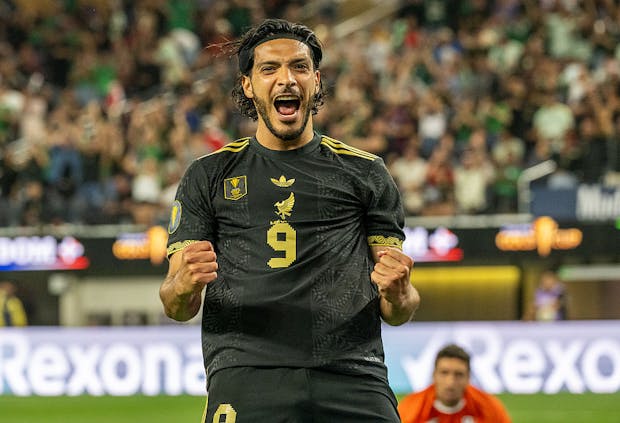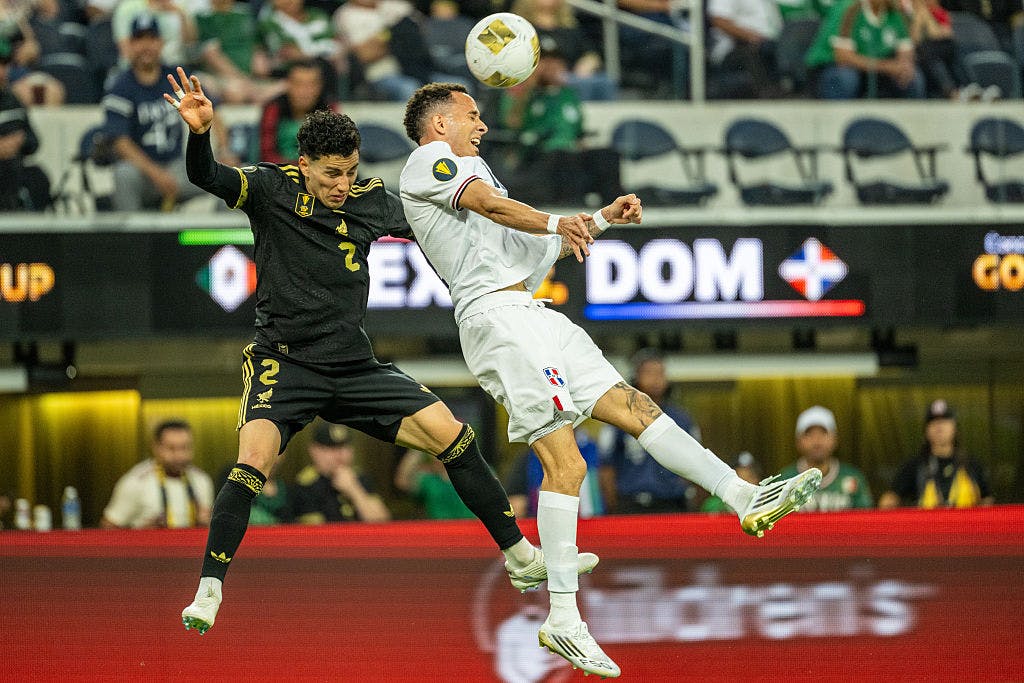
Just 12 months out from the FIFA World Cup, Concacaf, football’s governing body in North America, Central America and the Caribbean, is tapping into increasing commercial interest in the sport across North America as its flagship national team tournament gets underway.
Taking place across 13 stadiums in the US and one in Canada, the 16-team Gold Cup kicked off on Saturday and will run until July 6, with SoFi Stadium in California hosting the opening match between Mexico and Dominican Republic and the final scheduled for NRG Stadium in Houston.
A mix of Major League Soccer and NFL stadiums have been selected, with five of the venues also hosting next year’s World Cup in the US, Canada and Mexico. This year, teams from across the region will be joined by Saudi Arabia.
The Gold Cup is not the only major football competition taking place in the US this summer though, with the new-look Fifa Club World Cup also running from June 14 to July 13. However, Concacaf has worked closely with Fifa to ensure both tournaments can thrive and not cannibalise each other, with the Gold Cup largely taking place on the west coast of the US and the Club World Cup focusing more on the east coast.
“This geographic alignment allows both events to benefit from the continent’s appetite for world-class football,” explains Concacaf general secretary Philippe Moggio. “North America is uniquely positioned to host concurrent global competitions. It’s a sign of how far we’ve come and the excitement building ahead of 2026.”
‘Insight-driven’ sponsorship approach
At the time of writing Concacaf already had 17 confirmed sponsors for this year’s Gold Cup, with the governing body hoping to add a few more.
Sponsorship revenue for this year’s tournament has surpassed the total generated for the 2023 edition, which also took place in the US and Canada, by 175 per cent. New sponsors include Shriners Hospitals for Children, Guayakí, and others yet to be announced.
“We’ve taken a more strategic and insight-driven approach to sponsorship,” says Moggio. “We’ve invested significantly in understanding our audience – who they are, how they engage and what they value. This has helped sharpen our value proposition to partners.
“We’ve also expanded our content ecosystem and digital storytelling capacity to give brands more creative ways to activate. Our approach is highly deliberate, ensuring that every commercial package is tailored to drive meaningful engagement across platforms.”
Digital assets
Concacaf is seeking to drive exposure for sponsors through its relaunched mobile app, developed in collaboration with Deltatre. The app will introduce new opportunities for sponsors through “thoughtfully integrated, non-intrusive digital assets” that are tailored for fans on the move including an enhanced match centre integrated live with Opta that will include data visualisations and play-by-play updates.
Moggio also notes that there has been a strong uptick in interest from brands seeking to build equity with football fans ahead of next year’s World Cup. As the last major regional tournament before the World Cup, Moggio feels the Gold Cup has created a sense of “urgency and opportunity” for sponsors.
“Our fan base is one of the youngest, most diverse and digitally savvy in all of sports – and that’s incredibly appealing to marketers,” he adds. “The Gold Cup offers brands a real moment to connect, both culturally and commercially, in a high-impact environment.”
Sponsors will be activating their deals through retail promotions, fan experiences and co-branded digital content. For the first time, the Gold Cup will also feature its own custom match ball courtesy of Molten, which replaced Nike as Concacaf’s ball supplier last year.
‘Compelling content’
This year’s Gold Cup marks the culmination of Concacaf’s current broadcast cycle.
Currently, Concacaf has deals in place with Fox and Televisa-Univision in the US, OneSoccer in Canada, Televisa in Mexico, and ESPN across Central America and the Caribbean.
Preparations for Concacaf’s next rights cycle, spanning late 2026 to mid-2030, will begin following the Gold Cup, but the confederation’s immediate focus is on delivering a strong product for existing partners.
Interest in the US national team is higher than ever ahead of next year’s World Cup, while Mexico is the defending Gold Cup champion and has won the tournament a record nine times.
“We expect viewership to remain very strong,” says Moggio. “In recent cycles, Gold Cup and Nations League Finals matches have been the most-watched soccer events in the US, surpassing both domestic leagues and some international tournaments. With star players, national pride, and a format that fans know and love, the Gold Cup consistently delivers compelling content. The US market offers unmatched scale, and fans have demonstrated consistent demand for our competitions.
“Our partners gain visibility across a culturally rich and loyal fan base that is more likely than the general population to act after brand exposure – whether that’s talking about, researching, or purchasing a product. The tournament also provides a premium stage with assets like LED signage, in-stadium branding, fan experiences and digital activations. It’s a high-energy, high-impact opportunity to create lasting brand impressions and deepen engagement ahead of the 2026 World Cup.”
The mobile app also supports media-rights partners by encouraging audiences to engage with live match coverage through geo-targeted broadcaster listings, directing users to their appropriate local providers.

Early engagement key
Concacaf is hopeful that its strategy of selecting both soccer-specific stadiums and larger NFL venues will pay off.
Based on past benchmarks, including the 110,000-plus fans who attended the 2025 Nations League Finals in the US, Concacaf is optimistic that ticket sales will be strong for the Gold Cup.
The tournament kicked off in spectacular fashion with a high-energy opening ceremony at SoFi Stadium, setting the tone for an unforgettable summer of football.
“With a deliberate venue strategy, targeted marketing and strong regional rivalries, we expect high demand,” says Moggio. “Ticketing is being managed with a focus on early engagement, community outreach and grassroots and word-of-mouth activations.
“The matchday experience – from hospitality to entertainment – continues to be a major draw for our audiences. As we look toward 2026, the Gold Cup continues to be a powerful stage for football, culture, and community to come together.”